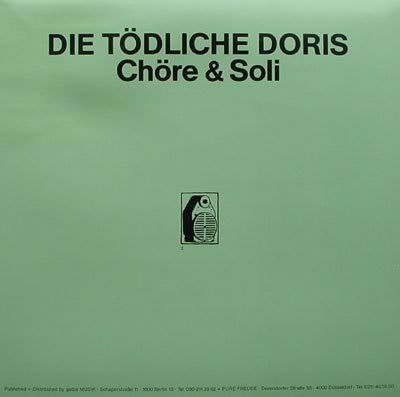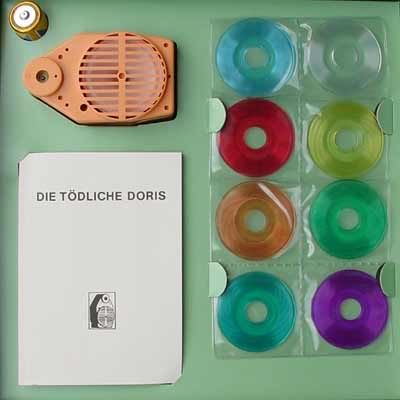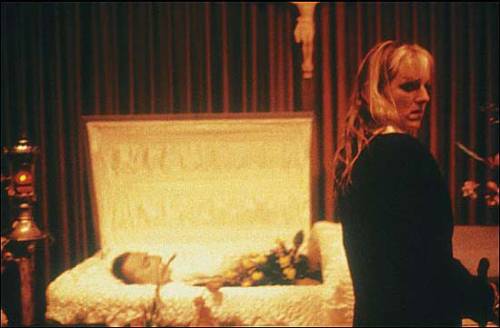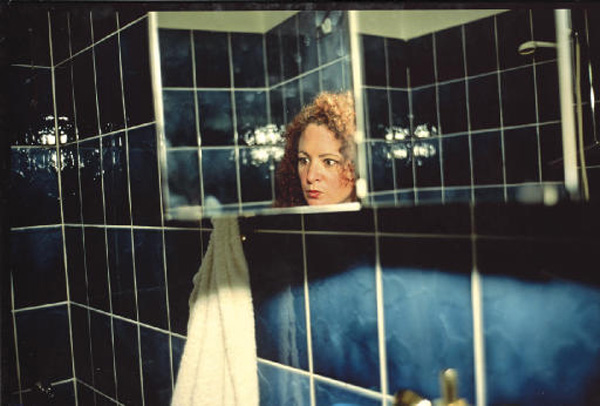Around the time that I started this blog, Friday 4th February to be absolutely precise, I charged down to London after work to see Chris Carter and Cosey Fanni Tutti performing a selection of the material they released during the 1980s and 1990s under the name of Chris & Cosey, this being the first time any of these tracks had been played live in over a decade. As most people will know, the duo now record and perform using a hybrid of their "surnames" Carter Tutti and this "exclusive" event was, no doubt, intended to tie in with the recent re-release on vinyl of four of their best loved albums also showcased in this five minute video clip I've snatched from their website.
Anyway, I was extremely glad I made the effort to travel half the length of the country as, not only did it provide me with another opportunity to see support band Factory Floor who I'd enjoyed enormously when they played in Leeds with The Horrors a couple of summers ago, but Chris & Cosey were completely compelling and provided one of my best live experiences of all-time ever. I thought that I'd missed the moment by not writing about it straightaway but watching a couple of clips on You Tube today brought it all flooding back so here goes.
Now, when Throbbing Gristle split up in 1981, it was C&C who took with them and developed the sequenced electronics, gesturing oh-so slightly towards disco and the commercially viable, that was in evidence on tracks like "AB/7A", "Hot On The Heels Of Love" and "Adrenalin", as well as Chris Carter's solo cassette release from 1980 "The Space Between", he being the ingredient in the band most renowned for his techno wizardry and love of the swirling electro dreamscapes of people like Tangerine Dream, as well as the paradoxical phenomena which was Abba's sometimes complex, sometimes seemingly unadulterated ultrapop - often all of this at the same time. Combine this with the bitter-sweet, seductive-yet-commanding vocals of Cosey Fanni Tutti, the foghorns in the night blasts of her cornet playing, both of which are perhaps best exemplified on TG's "Heathen Earth" album, and the double-edged atmospherics of "Hometime" (her solo contribution to the album "D.O.A.") and you're a good way towards getting a sense of the Chris & Cosey sound and aesthetic which then evolved along with the technology and developing tastes, both in Britain and abroad, for rhythmic and danceable electronic music during the eighties and early nineties. Titles like "Synaesthesia", "Pagan Tango", "Musique Fantastique", "Techno Primitiv", "Exotica" and "Trance" are also quite apposite reference points.
When the duo took to the stage in February, somewhere around nine thirty, a lot of people were still at the bar and the black studio-like hall was less than a quarter full, this meaning that the majority of those in attendance missed Cosey's prologue to the performance during which she said a few words about the important place that the ICA holds in their history, it having been the venue for COUM Transmissions "Prostitution" exhibition in 1976 where TG played one of their earliest gigs. She also took the opportunity to briefly dedicate "the energies we create tonight" to the recently departed Peter "Sleazy" Christopherson and "his sense of indulgence and fun." As he would have said, she told us, "don't be sad. Enjoy yourselves," and with that they launced into a rendition of the haunting "Dr. John (Sleeping Stephen)" from 1987's "Exotica" album, the rhythmic slabs of noise, funereal chords and electronic stabs and pulses providing an elegiac and incantatory opening to the set over which Cosey unfolded her "Porphyria's Lover" type narrative of strangulation, followed by the ritual undressing and washing of the corpse. The closing words of "good night" had a particularly apt resonance on this occasion.
From here on, for the next hour and a half or so, they played a set which seemed very carefully planned in its evolution and purpose, as the rich, multi-layered and hypnotic electronics provided by a purposeful Chris Carter, operating a bank of keyboards, sequencers and oscillascopes at the back of the stage, cloaked and seduced the audience in a manner which seemed to possess magical potential. There's an old clip of Amii Stewart somewhere, singing "Knock on Wood" on something like "Seaside Special", whilst all around her a really disparate group of people perform the most frenetic and uninhibited dances, all seemingly lost in their own worlds, as though under the influence of one of those humiliating TV hypnotists and this was the effect the music seemed to be having on a large number of those gathered at the ICA. As you looked around, all kinds of people, seemingly unconnected, swirled, gestured and dipped as though involuntarily entranced whilst others gawped at Cosey who blew and banged a range of complementary instruments and provided the vocals, her voice often adding to the tonal blends rather than being a conduit for verbal ideas. For the most part, she didn't speak directly to the audience, this adding to the sense of it being a pre-meditated aural journey in which to become fully absorbed, although at one point she did say something along the lines of, "do you remember all these songs? It's been such a long time." This was possibly when they did "Driving Blind" from 1983's "Songs of Love and Lust" album with its lyrics of "driving blind to hell knows where" and "and I'm never like this when I'm not with you" which seem to epitomise the atmosphere I'm trying to describe above. This track received one of the largest cheers of the night and some kind soul filmed it and put it up on You Tube.
Then, as a finale, they pulled out their pop almost-hit "October(Love Song)" from 1982, the celebratory nature and sweetness of which seemed to unlock the spell which had been wound over the last ninety minutes or so. As Chris Carter continued to concentrate on the job in hand, Cosey seemed to be having quite a jolly time making sprinkling gestures with her fingers to accompany the cascading synths and bopping backwards and forwards as she delivered her lyrics of unbridled love and passion. There must have been some irony in there - it's all such a long way from "Zyklon B Zombie" and "Slug Bait" - although none seemed evident.
Anyway, there's some reflections on a memorable night. I'm off to see them again in May when Carter Tutti play at the Mute Short Circuit festival at The Roundhouse and am very much looking forward to it.












